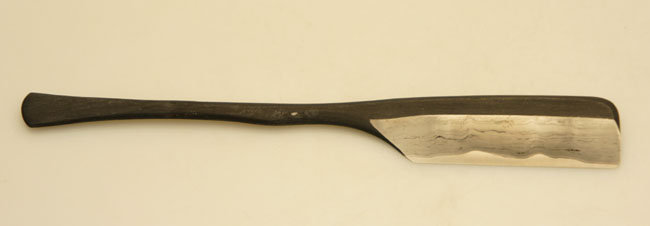Results 1 to 10 of 22
Thread: How to hone a Japenese wedge?
Threaded View
-
03-03-2012, 05:35 PM #1
 How to hone a Japanese wedge?
How to hone a Japanese wedge?
I just recieved this "Tensui 57mm Double bevel edges Watetsu/Fuji no Shiro" razor. Before I touch it, I'd very much appreciate some advice how to hone it, please. I've been into straight razors for about 9 months now, so I know just enough to be dangerous.

I think these are the salient points:
* It's not a kamisori: it's symmetrical.
* The blade is a true wedge: it has no hollow and no secondary bevel.
* The blade is laminated from two types of steel, with the edge harder than the body.
Looking at advice found on line about Western wedges, I worry how much of it applies to this different Japanese blade. In particular:
How does the difference in hardness affect the honing process? Do I need to worry about losing more steel in the body of the blade than the edge, thereby changing the geometry?
I could tape to avoid honing the body, but I don't want to introduce a secondary wedge [oops, I mean bevel], do I?
FYI, here's the honing equipment I currently have to work with:
- DMT D8EE
- Naniwa 12000 Super stone
- Standard coticule bout
- Hard arkansas oilstone
FYI, I bought the razor from aframestokyo.com (otherwise known as Huckleberry Vintage Fishing Supply, of Mililani, Hawaii). They shipped it to me on the East Coast in three days -- not bad.
TIALast edited by denisb; 03-04-2012 at 03:31 AM. Reason: Mispelled Japanese in title


 LinkBack URL
LinkBack URL About LinkBacks
About LinkBacks






 Reply With Quote
Reply With Quote